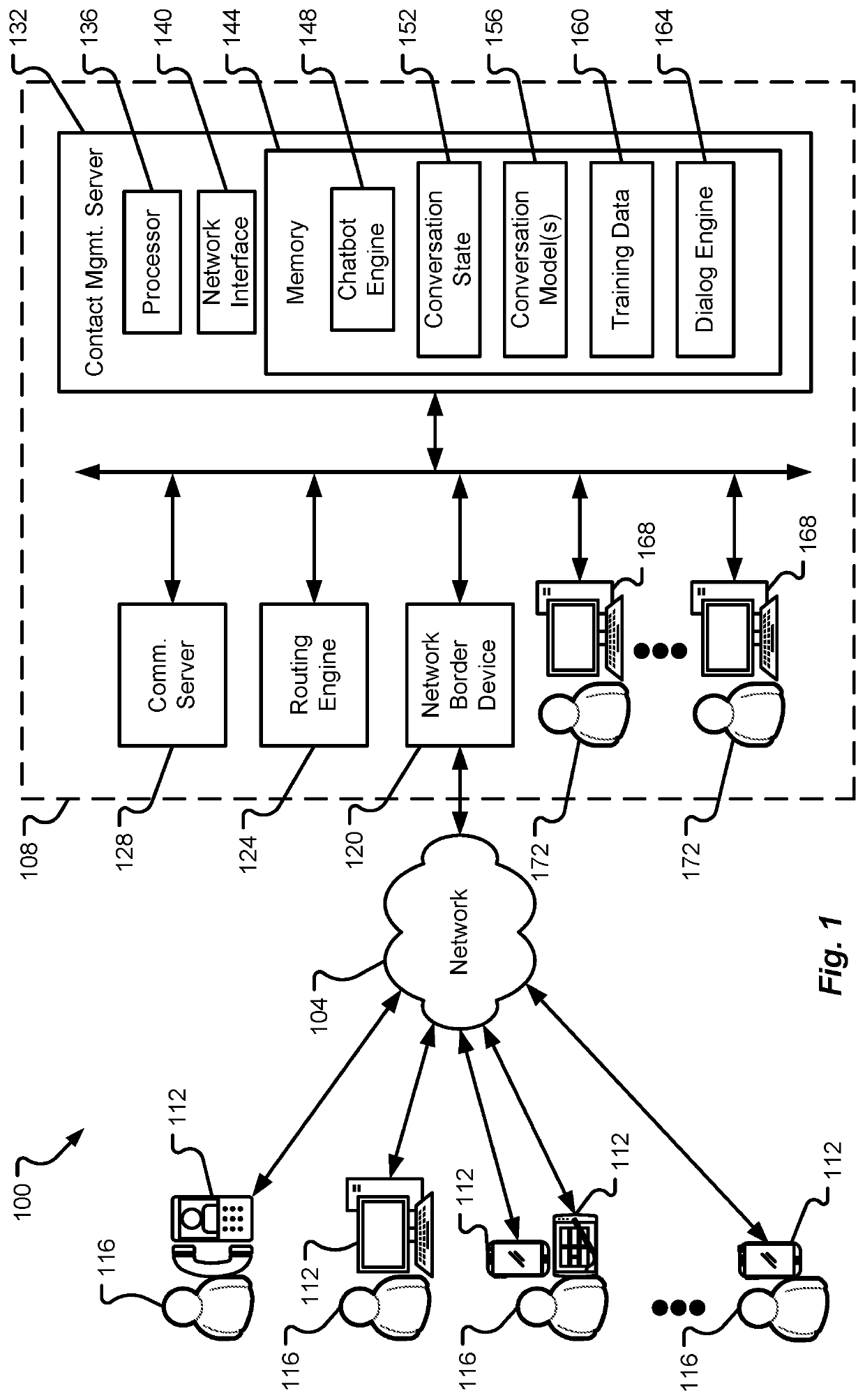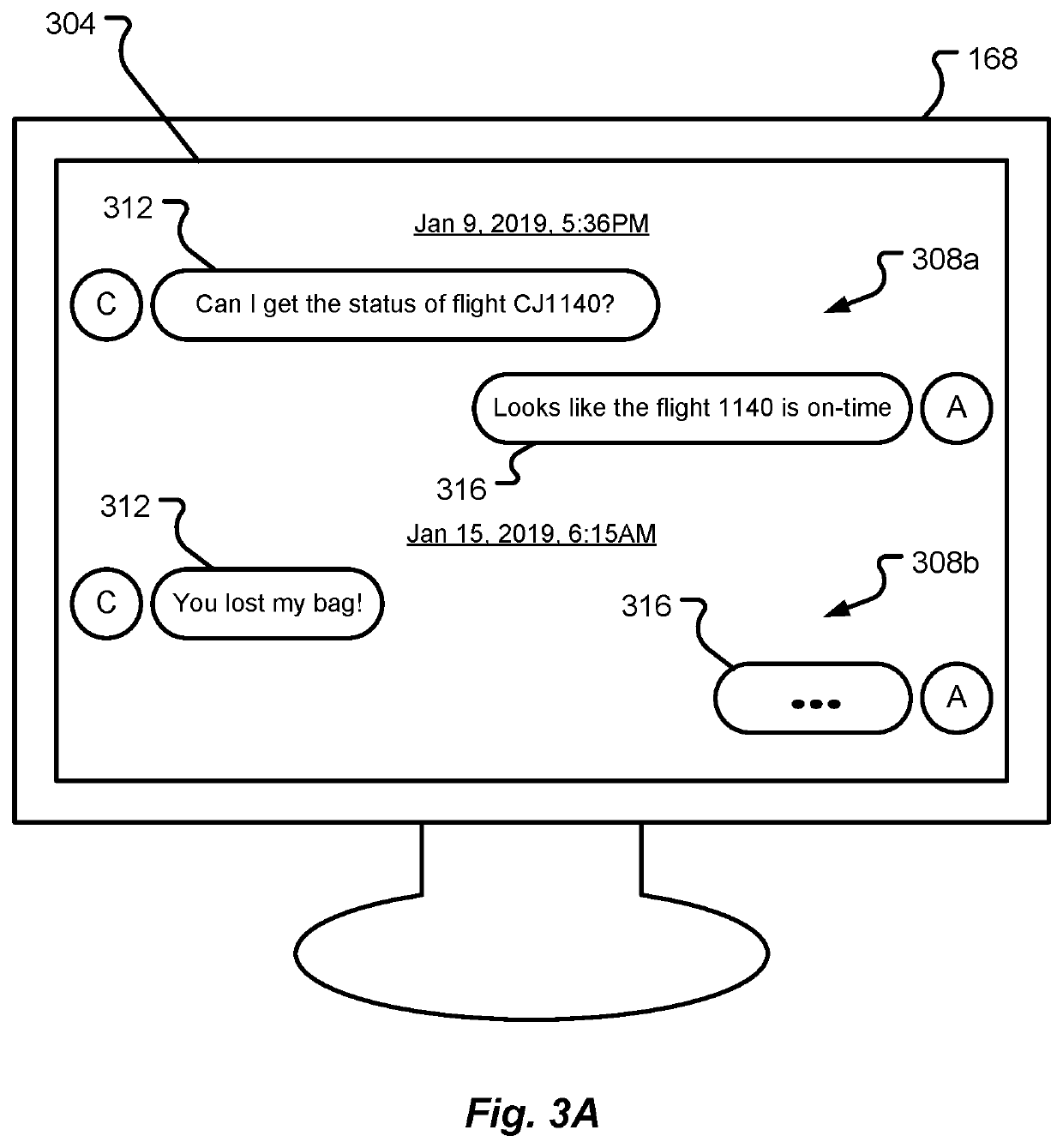Enhanced digital messaging
a technology of digital messaging and enhanced messaging, applied in the direction of program control, special services for subscribers, instruments, etc., can solve the problem of determining whether a particular interaction has ended and becoming more difficul
- Summary
- Abstract
- Description
- Claims
- Application Information
AI Technical Summary
Benefits of technology
Problems solved by technology
Method used
Image
Examples
Embodiment Construction
[0092]In the following description, for the purposes of explanation, numerous specific details are set forth in order to provide a thorough understanding of various embodiments disclosed herein. It will be apparent, however, to one skilled in the art that various embodiments of the present disclosure may be practiced without some of these specific details. The ensuing description provides exemplary embodiments only, and is not intended to limit the scope or applicability of the disclosure. Furthermore, to avoid unnecessarily obscuring the present disclosure, the preceding description omits a number of known structures and devices. This omission is not to be construed as a limitation of the scopes of the claims. Rather, the ensuing description of the exemplary embodiments will provide those skilled in the art with an enabling description for implementing an exemplary embodiment. It should however be appreciated that the present disclosure may be practiced in a variety of ways beyond ...
PUM
 Login to View More
Login to View More Abstract
Description
Claims
Application Information
 Login to View More
Login to View More - R&D
- Intellectual Property
- Life Sciences
- Materials
- Tech Scout
- Unparalleled Data Quality
- Higher Quality Content
- 60% Fewer Hallucinations
Browse by: Latest US Patents, China's latest patents, Technical Efficacy Thesaurus, Application Domain, Technology Topic, Popular Technical Reports.
© 2025 PatSnap. All rights reserved.Legal|Privacy policy|Modern Slavery Act Transparency Statement|Sitemap|About US| Contact US: help@patsnap.com



